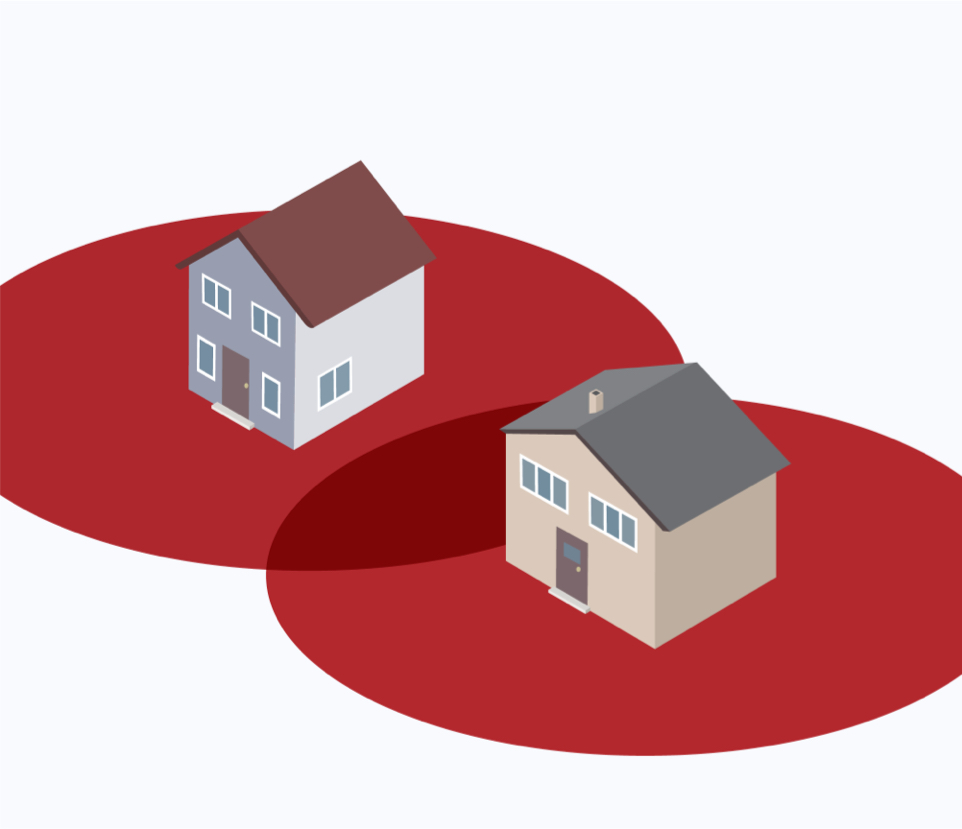Learnings From Lytton
What happened in Lytton could happen to any community in B.C. But thanks to the Lytton Fire Report, we have a chance to learn from this disaster and work to prevent another from happening again.
Here are some key insights from the report to unpack how fire spread in Lytton, what other communities can glean from it, what you should do to prepare for a wildfire, and how Lytton is using these learnings today to become the model FireSmart community for the future.
1
Dry surface fuels led fire to homes and other structures
Finding
The extreme fire behavior in Lytton wasn’t fueled by fire spreading through tree canopies. Instead, surface fires burned along the ground in dead grass, dry shrubs, and accumulations of leaf, needle litter, and other flammable debris.
Learning
Taking FireSmart actions on your property will influence how a fire approaches your home. Doing basic yard maintenance, like mowing and watering your lawn to pruning your trees, reduces the fuel sources around your property.


2
Fire Moved Fast
Finding
The fire moved quickly toward Lytton, exposing it to embers and heat. An hour after the first report of fire, at least 20 structures, mostly homes, were already burning. Meanwhile, wind-driven embers began to accumulate and smoulder, causing rapid structure-to-structure ignitions between sheds, homes, and business.
Learning
Fires spread with astonishing speed, so it is critical that all households have an evacuation plan and that everyone follows evacuation instructions as quickly as possible. To ensure you’re ready to leave your home on short notice: get your grab-and-go bags ready (include several days of clothing, toiletries and medications); prepare an emergency plan; make copies of important documents and mementos; and listen to local emergency officials for updates.
3
The Situation was Worsened by Vulnerable and Overlapping Home Ignition Zones (HIZs)
Finding
The rapid fire spread in the Lytton community was mainly a result of highly vulnerable ignition conditions within individual HIZs (the 30-metre area around a structure and its flammable attachments) and by structure-to-structure spread due to overlapping HIZs.
Learning
Taking FireSmart actions inside HIZs greatly reduces the chance of ignition from wind-blown embers. In densely populated communities with overlapping HIZs, neighbours should work together to ensure every property has ignition-resistant structures and landscapes.


4
FireSmart Homes Survived
Finding
Easily ignitable homes and other structures were the primary source of fuel for the Lytton fire. Unmaintained properties and structures built without FireSmart materials left many homes vulnerable to ignition from flying embers.
Learning
Easily ignitable homes and other structures were the primary source of fuel for the Lytton fire. Vulnerable properties and structures built without FireSmart materials were more likely to ignite due to flying embers.
5
Lytton’s FireSmart Plan
Recommendation
Lytton will be under threat again, so it’s crucial they make community wildfire protection their top priority moving forward.
Implementation
Lytton plans to adopt the “National Guide for Wildland-Urban Interface Fires” in the construction of all homes, staff the fire department with a FireSmart Coordinator to lead community education and engagement programs, and enrol all of its neighbourhoods into the FireSmart Canada Neighbourhood Recognition Program (FCNRP).

Want to See the Lytton Report and all the Learnings?
Read the entire report with detailed analyses from leading scientists, and find out how Lytton is using their recommendations to redefine itself as a model FireSmart community.
